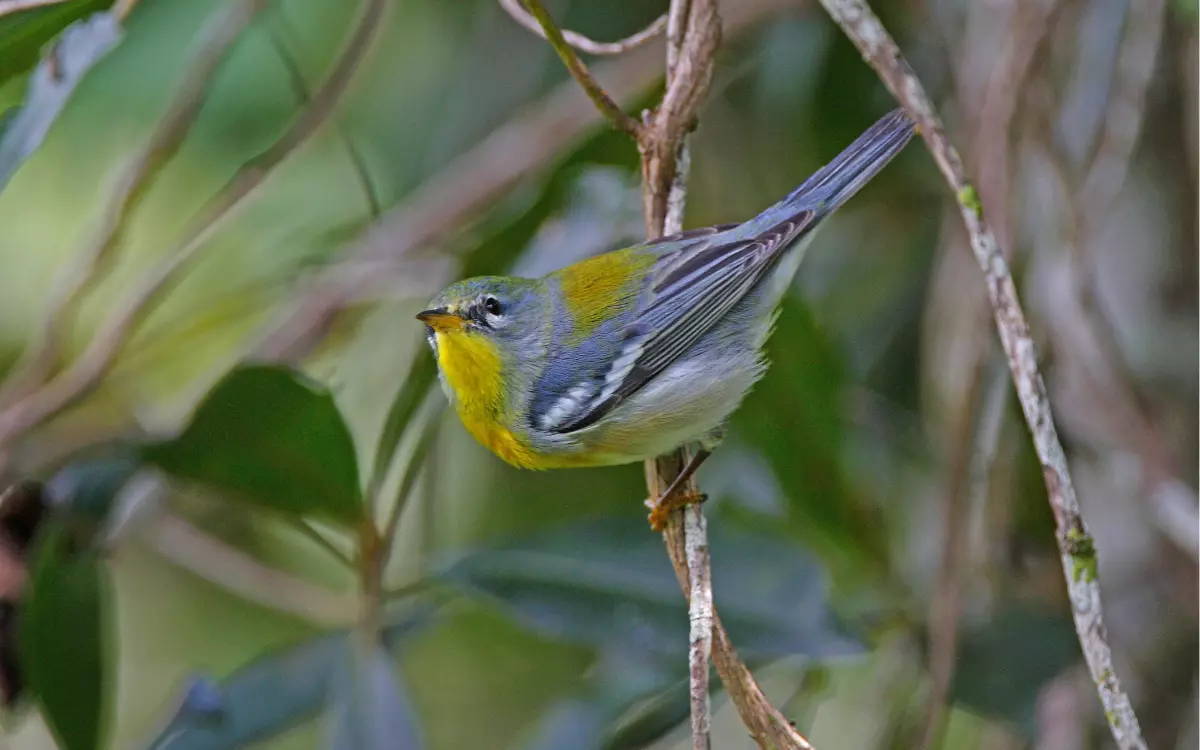15 common Yellow Birds Colorado with (ID & images)
Colorado is a prime destination for birdwatchers, boasting a multicolored array of Yellow Birds Colorado. These colorful feathers are different, ranging from the bright American Goldfinch to the elusive Yellow-breasted Chat.
15 common Yellow Birds Colorado
1. American Goldfinch (Spinus tristis):

- Kingdom: Animalia
- Phylum: Chordata
- Class: Aves
- Order: Passeriformes
- Family: Fringillidae
- Subfamily: Carduelinae
- Genus: Spinus
- Species: S. tristis
The American Goldfinch is a small, bright yellow bird with a black forehead and wings.It prefers open areas like gardens and fields, where it eats seeds, especially from thistles and sunflowers.
Attraction Tips: To attract these vibrant birds, plant native thistles and sunflowers in your yard and use bird feeders with nyjer seeds.
- Length: 4.3 – 5.1 in (11 – 13 cm)
- Weight: 0.4 – 0.7 oz (11 – 20 gm)
- Wingspan: 7.5 – 8.7 in (19 – 22 cm)
2.Western Tanager (Piranga ludoviciana):
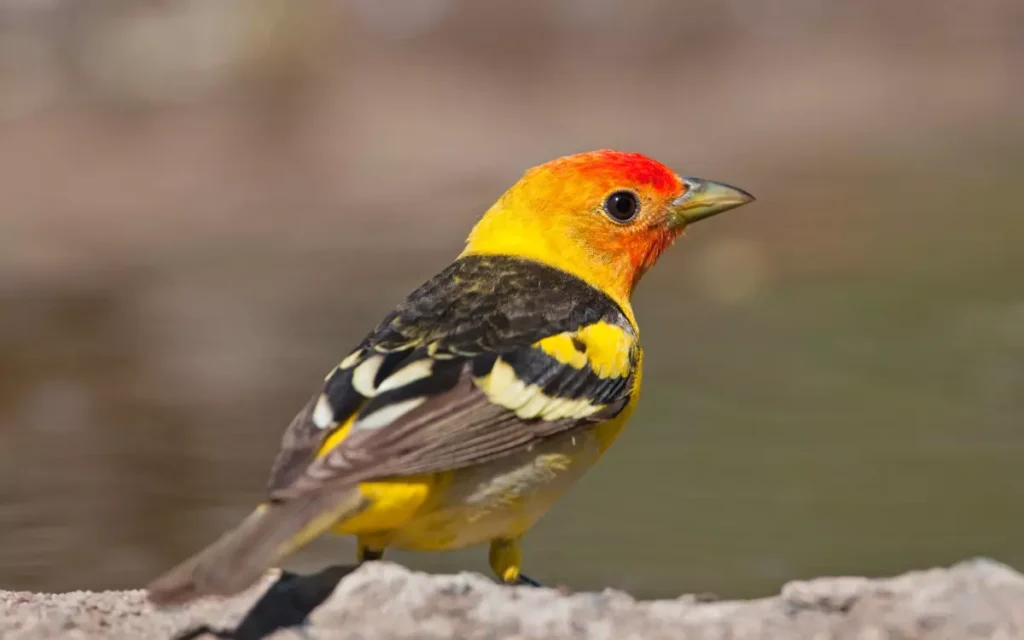
- Kingdom: Animalia
- Phylum: Chordata
- Class: Aves
- Order: Passeriformes
- Family: Cardinalidae
- Subfamily:
- Genus: Piranga
- Species: P. ludoviciana
Males are striking with a bright yellow body, red face, and black wings. Females have a more subdued color.
They breed in western states and migrate to Central America.
Best seen in coniferous forests during the breeding season. Keep an eye out for their colorful presence high in the trees.
- Length: 6.3 – 7.5 in (16 – 19 cm)
- Weight: 0.8 – 1.3 oz (24 – 36 gm)
- Wingspan: approximately 11.5 inches
3. Yellow Warbler (Setophaga petechia):

- Kingdom: Animalia
- Phylum: Chordata
- Class: Aves
- Order: Passeriformes
- Family: Parulidae
- Subfamily:
- Genus: Setophaga
- Species: S. petechia
A small bird that is bright yellow all over. Male Yellow Warblers stand out with chestnut streaks on their chests, adding a dash of color.
This bird loves areas with thick vegetation near water, like streamside thickets and wetlands.
They are busy birds, always moving as they search for insects, with a special love for munching on caterpillars.
- Length: 4.7 – 5.1 in (12 – 13 cm)
- Weight: 0.3 – 0.4 oz (9 – 11 gm)
- Wingspan: 6.3 – 7.9 in (16 – 20 cm)
4.Evening Grosbeak (Coccothraustes vespertinus):
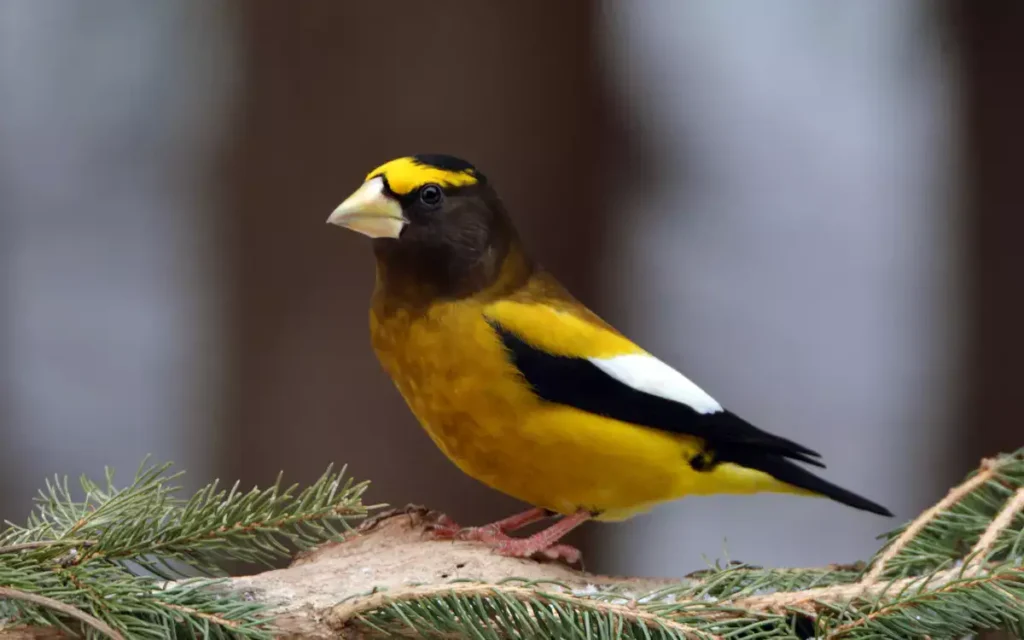
- Kingdom: Animalia
- Phylum: Chordata
- Class: Aves
- Order: Passeriformes
- Family: Fringillidae
- Subfamily:
- Genus: Coccothraustes
- Species: C. vespertinus
A large bird that catches the eye with its bright yellow body and distinctive, hefty bill.
This bird makes its home in open coniferous forests. During winter, it’s common to see them at bird feeders, adding a splash of color to snowy scenes.
Evening Grosbeaks are big fans of sunflower seeds. They skillfully use their robust bills to crack open the tough shells, making the most of their favorite snack.
- Length: 6.3 – 7.1 in (16 – 18 cm)
- Weight: 1.9 – 2.6 oz (53 – 74 gm)
- Wingspan: 11.8 – 14.2 in (30 – 36 cm)
5. Yellow-headed Blackbird (Xanthocephalus xanthocephalus):
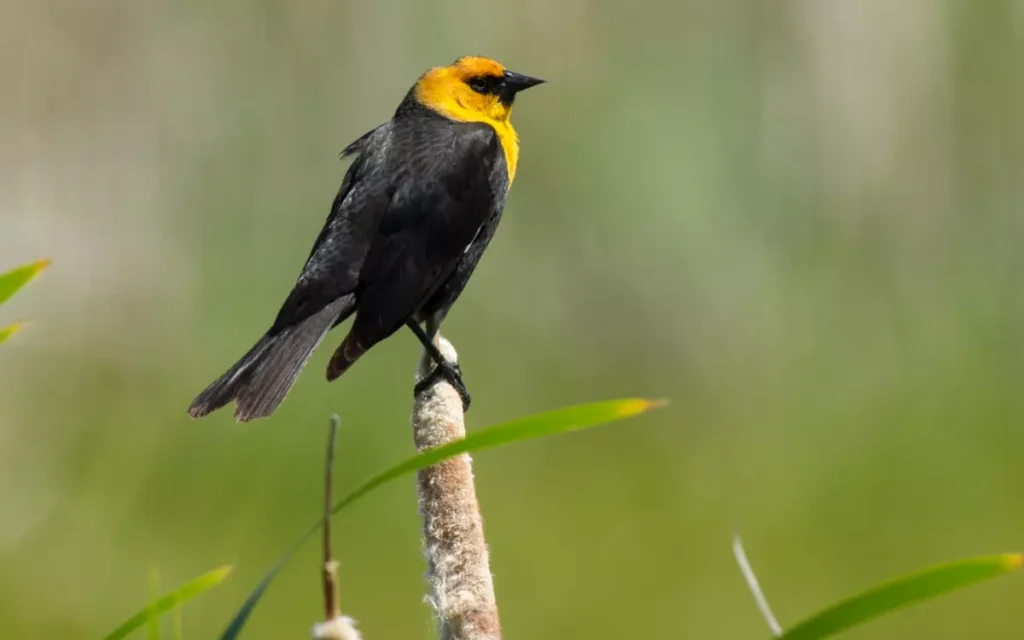
- Kingdom: Animalia
- Phylum: Chordata
- Class: Aves
- Order: Passeriformes
- Family: Icteridae
- Subfamily: Icterinae
- Genus: Xanthocephalus
- Species: X. xanthocephalus
Males of this species are striking with a black body and a bright yellow head and chest. Females are mostly brown with a lighter, duller yellow coloration.
They breed in cattail marshes found across the northern and western parts of the U.S., creating nests close to the water.
They are very territorial during the breeding season, often seen defending their space vigorously against intruders to protect their young and territory.
- Length: 8.3 – 10.2 in (21 – 26 cm)
- Weight: 1.6 – 3.5 oz (44 – 100 gm)
- Wingspan: 16.5 – 17.3 in (42 – 44 cm)
6. Common Yellowthroat (Geothlypis trichas):

- Kingdom: Animalia
- Phylum: Chordata
- Class: Aves
- Order: Passeriformes
- Family: Parulidae
- Genus: Geothlypis
- Species: G. trichas
This small bird has an olive-green back and a bright yellow throat. Males stand out with a distinctive black mask across their eyes.
Common Yellowthroats love wet, densely vegetated areas like marshes and thickets. They are often hidden, moving quietly through underbrush.
You might not always see them, but their unique “witchety-witchety” call is a giveaway of their presence. This call is one of the easiest ways to identify them even if they’re out of sight.
- Length: 4.3 – 5.1 in (11 – 13 cm)
- Weight: 0.3 – 0.3 oz (9 – 10 gm)
- Wingspan: 5.9 – 7.5 in (15 – 19 cm)
Read also: 9 Blue Colored Birds To See
7. Bullock’s Oriole (Icterus bullockii):
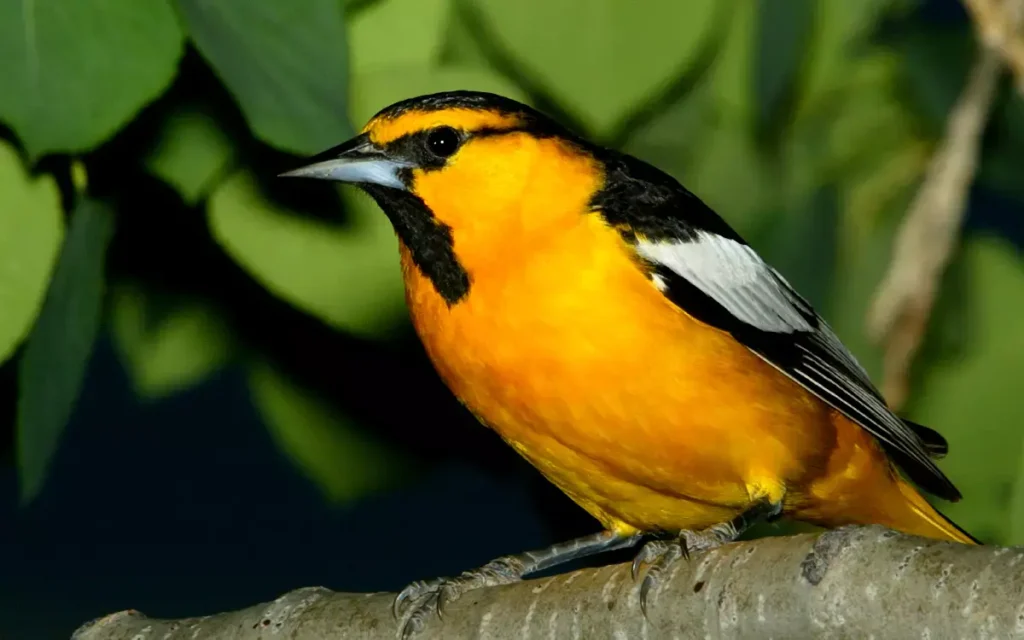
- Kingdom: Animalia
- Phylum: Chordata
- Class: Aves
- Order: Passeriformes
- Family: Icteridae
- Subfamily:
- Genus: Icterus
- Species: I. bullockii
Males are vibrant with a bright orange-yellow body, a black throat, and an eye-line. Females have a more subdued, duller color.
These birds thrive in open woodlands and places with scattered trees, enjoying the space and natural resources.
Attraction Tips: To see these colorful orioles in your garden, try hanging fruit and nectar feeders. They love sweet treats and will often visit gardens if these food sources are available.
- Length: 6.7 – 7.5 in (17 – 19 cm)
- Weight: 1.0 – 1.5 oz (29 – 43 gm)
- Wingspan: around 12.2 in (31 cm)
8. Nashville Warbler (Leiothlypis ruficapilla):
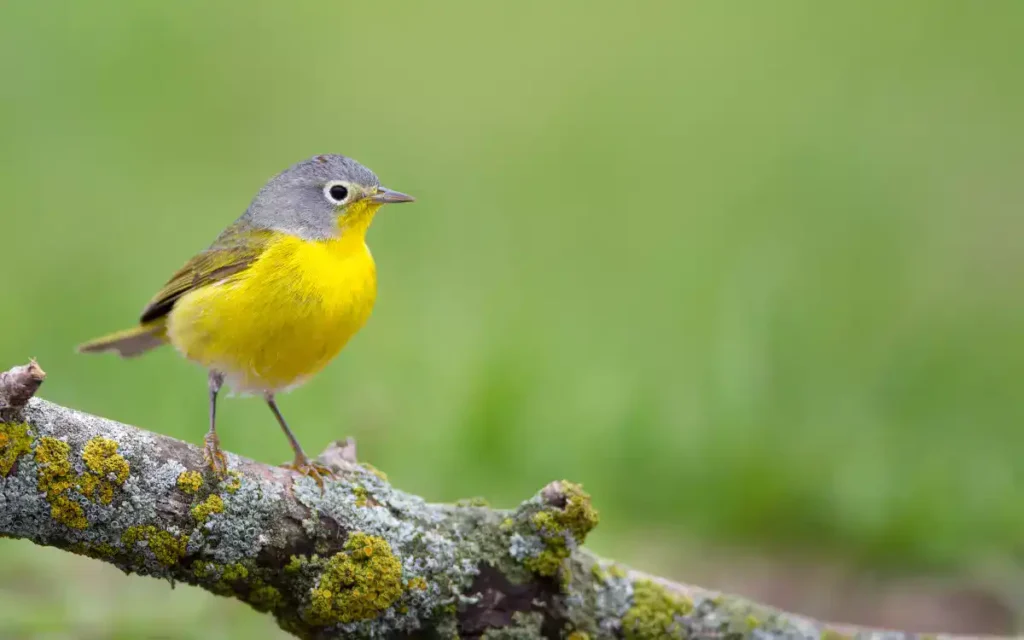
- Kingdom: Animalia
- Phylum: Chordata
- Class: Aves
- Order: Passeriformes
- Family: Parulidae
- Subfamily:
- Genus: Leiothlypis
- Species: L. ruficapilla
Both males and females have an olive-green back and a bright yellow belly, sporting a simple yet vibrant look.
They breed in mixed forests that have both coniferous and deciduous trees, finding these environments ideal for nesting.
Nashville Warblers are busy birds, often seen actively searching for insects on the lower branches of trees. Their quick movements and sharp eyes help them catch all sorts of bugs, making them fun to watch as they flit from branch to branch.
- Length: 4.3 – 5.1 in (11- 13 cm)
- Weight: 0.2 – 0.5 oz (6.7 – 13.9 gm)
- Wingspan: 6.7 – 7.9 in(17 – 20 cm)
9.MacGillivray’s Warbler (Geothlypis tolmiei):
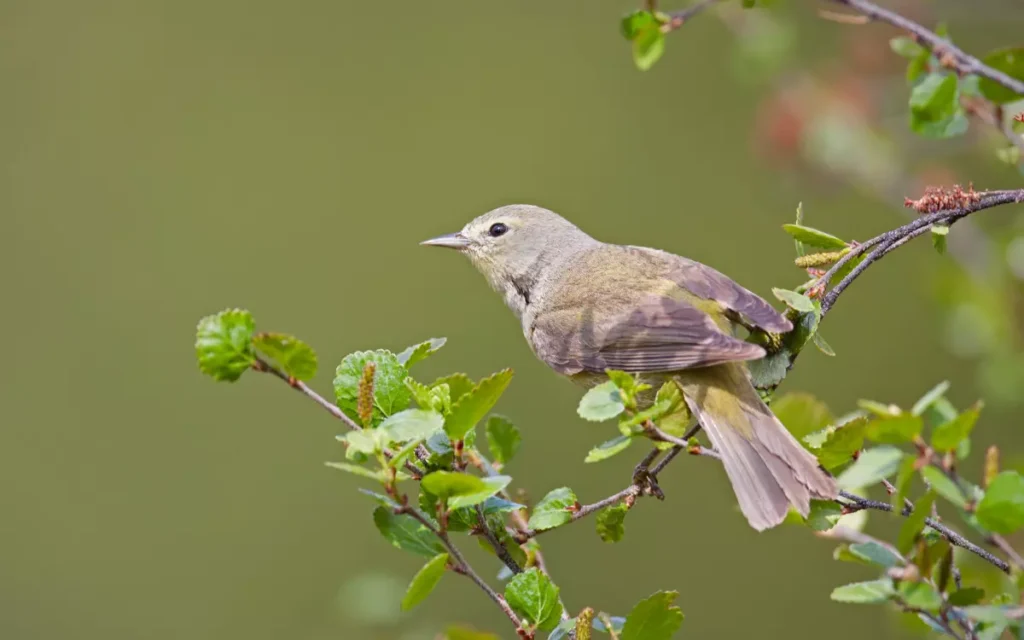
- Kingdom: Animalia
- Phylum: Chordata
- Class: Aves
- Order: Passeriformes
- Family: Parulidae
- Genus: Geothlypis
- Species: G. tolmiei
This bird has olive-green upperparts and a bright yellow throat, set off by a distinctive gray hood that covers its head and neck.
Prefers dense shrubbery close to water sources. It is a migratory bird, traveling to different areas depending on the season.
MacGillivray’s Warblers forage near the ground, making them a bit tricky to spot. They are shy and tend to stay hidden among the thick underbrush, making a game of patience and sharp eyes necessary to see them.
- Length: 3.9 – 5.9 in(10 – 15 cm)
- Weight: 0.3 – 0.5 oz (9 – 13 gm)
- Wingspan: around 7.5 inches (19 cm)
10. Yellow-breasted Chat (Icteria virens):

- Kingdom: Animalia
- Phylum: Chordata
- Class: Aves
- Order: Passeriformes
- Family: Icteriidae
- Genus: Icteria
- Species: I. virens
One of the largest warblers, featuring a bright yellow breast and an olive back.Thrives in dense thickets and areas with lots of tangled vegetation.
Famous for its complex and beautiful song, this bird loves to sing during the breeding season.
It can be hard to spot outside of this time as it becomes quite elusive, hiding away in the densest parts of the underbrush. Listening to its distinctive song is often the best way to locate it.
- Length: around 7.1 in (18 cm)
- Weight: 0.8 – 1.1 oz (23 – 31 gm)
- Wingspan: around 9.8 in (25 cm)
11. Hooded Warbler (Setophaga citrina):
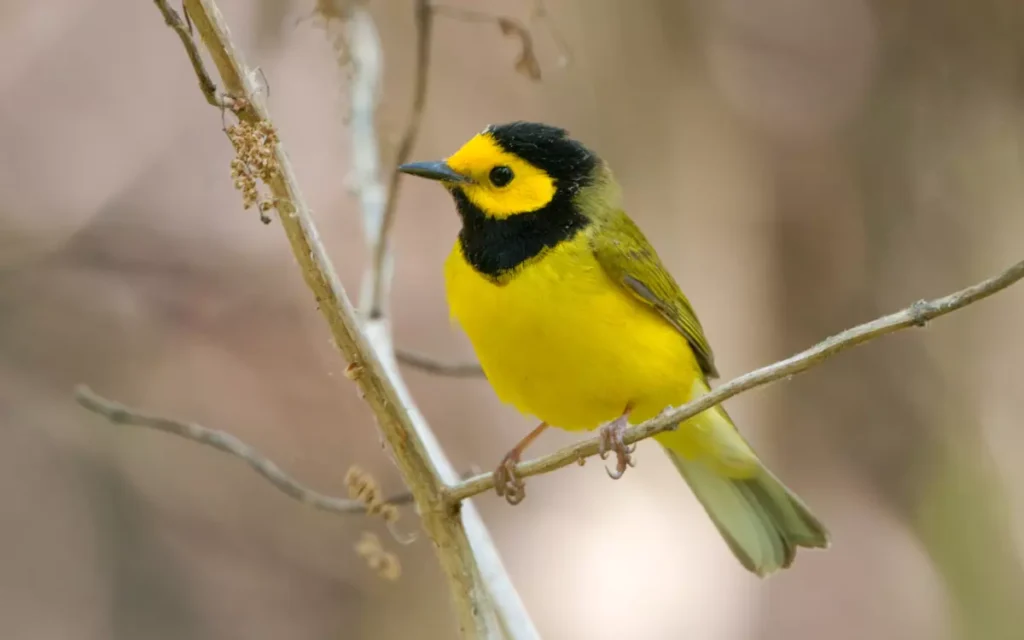
- Kingdom: Animalia
- Phylum: Chordata
- Class: Aves
- Order: Passeriformes
- Family: Parulidae
- Subfamily:
- Genus: Setophaga
- Species: S. citrina
Bright yellow face and underparts with an olive-green back, and a distinctive black hood that gives this bird its name.
Prefers mature deciduous forests, especially those with thick undergrowth where it can hide and build nests. This warbler is active and often seen flitting through low branches as it hunts for insects.
They are also known for their beautiful, musical song which can often be heard during the breeding season. Despite their activity, their coloring and habits make them sometimes tricky to spot.
- Length: around 5.1 in (13 cm)
- Weight: 0.3 – 0.4 oz (9 – 12 gm)
- Wingspan: around 6.9 in (17.5 cm)
12. Yellow-throated Vireo (Vireo flavifrons):
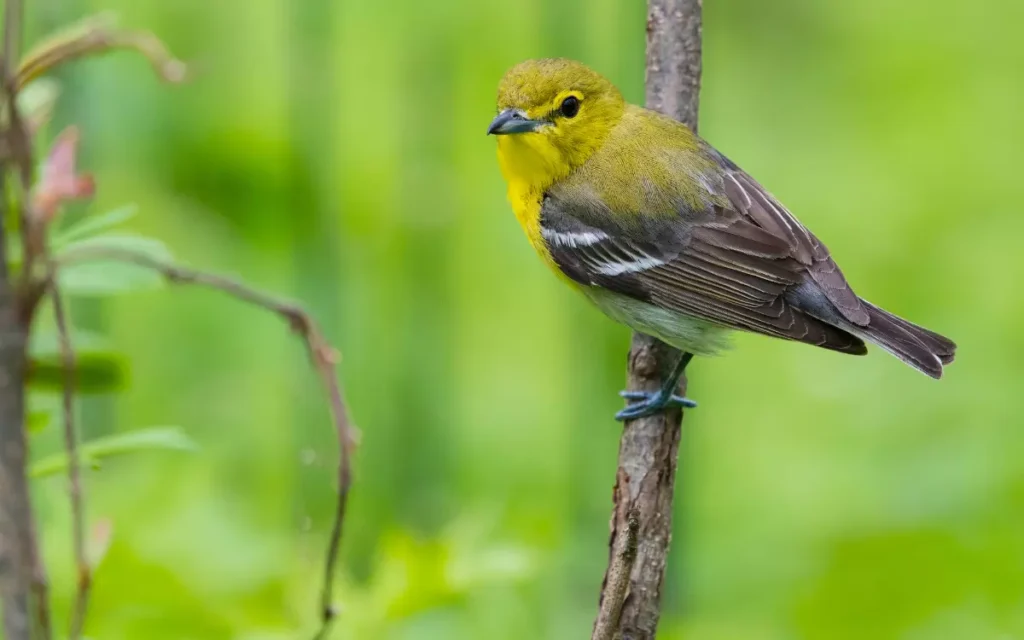
- Kingdom: Animalia
- Phylum: Chordata
- Class: Aves
- Order: Passeriformes
- Family: Vireonidae
- Subfamily:
- Genus: Vireo
- Species: V. flavifrons
This bird features bright yellow on its throat and breast, contrasting with olive-green upperparts and white belly.
Prefers deciduous forests, often found in the canopy where it can blend into the foliage. Yellow-throated Vireos are active during the day, mainly foraging for insects in tree leaves.
They are known for their loud, clear song that echoes through the trees, making them easier to hear than to see. Their presence is often detected by their distinctive calls long before they are spotted visually.
- Length: 5.1 – 5.9 in (13 – 15 cm)
- Weight: 0.5 – 0.7 oz (15 – 21 gm)
- Wingspan: around 9.1 in (23 cm)
14. Scott’s Oriole (Icterus parisorum):
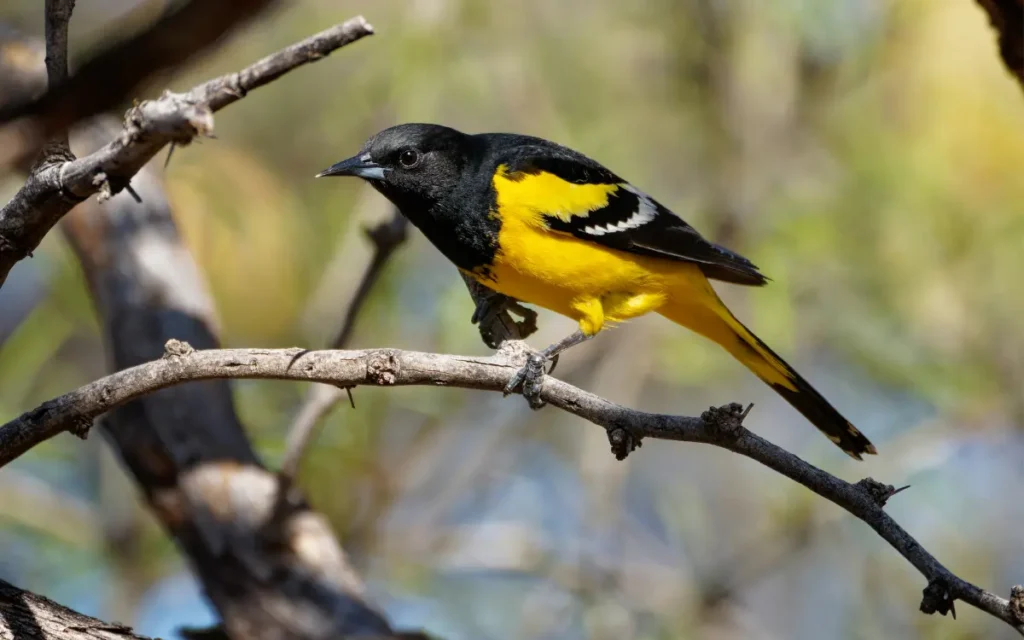
- Kingdom: Animalia
- Phylum: Chordata
- Class: Aves
- Order: Passeriformes
- Family: Icteridae
- Subfamily:
- Genus: Icterus
- Species: I. parisorum
Males are striking with a black body and bright yellow underparts; females are paler with more grayish-yellow coloring.
Often found in arid landscapes, particularly in areas with yucca plants, which they use for nesting. Scott’s Orioles are known for their melodious songs and are often seen perched high in yuccas or trees.
They feed on nectar, insects, and fruits, adeptly using their slender bills to extract nectar from flowers, making them fascinating to watch.
- Length: around 9.1 in (23 cm)
- Weight: 1.1 – 1.4 oz (32 – 41 gm)
- Wingspan: around 12.6 in (32 cm)
15. Western Meadowlark (Sturnella neglecta):
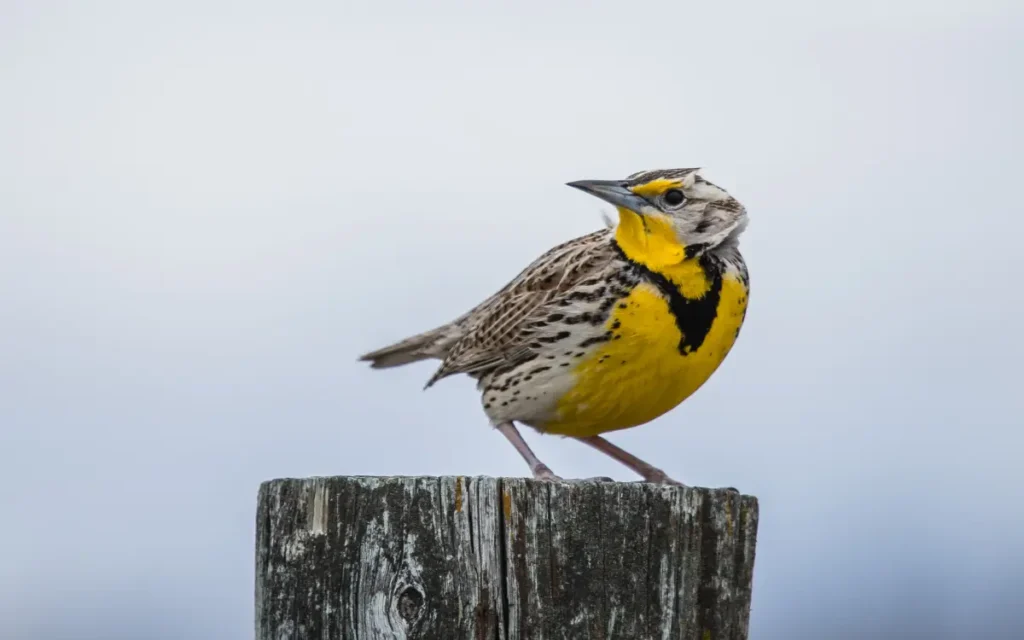
- Kingdom: Animalia
- Phylum: Chordata
- Class: Aves
- Order: Passeriformes
- Family: Icteridae
- Subfamily:
- Genus: Sturnella
- Species: S. neglecta
This bird is easily recognizable by its bright yellow throat and belly, with a distinctive black “V” on the chest and brown, streaked upperparts.
Prefers open fields and grasslands, where it can be seen walking on the ground or perched on fence posts. Western Meadowlarks are known for their beautiful flute-like song that carries across their open habitat.
They forage on the ground for insects and seeds, often singing from a high perch to claim their territory or attract a mate.
- Length: 6.3 – 10.2 in (16 – 26 cm)
- Weight: 3.1 – 4.1 oz (89 – 115 gm)
- Wingspan: 16.1 in (41 cm)
Birdwatching Locations:
Yellow birds in Colorado love the woodlands and wetlands. These natural spaces offer lots of trees and water, making them perfect spots for birds. If you want to see these colorful creatures, check out Cherry Creek State Park or Barr Lake State Park.
The best times to go birdwatching are during spring and fall when yellow birds are more active. This is also a great time to spot Ducks in Colorado as they join the yellow birds in their lively habitats.
FAQs:
Q: What kind of bird is bright yellow in Colorado?
Ans: The American Goldfinch is a bright yellow bird you can find in Colorado.
Q: Does Colorado have yellow finches?
Ans: Yes, Colorado is home to yellow finches like the American Goldfinch.
Q: What is the most common yellow bird?
Ans: The American Goldfinch is one of the most common yellow birds.
Q: How rare is a yellow bird?
Ans: Yellow birds like the American Goldfinch are common, but some species may be less common depending on the area.
Q: Is a yellow bird good luck?
Ans: In many cultures, seeing a yellow bird is considered good luck.
Conclusion:
In Colorado, above all yellow birds brighten the landscapes. They’re not just beautiful; they play a key role in our ecosystem. Spotting these birds is a delightful and lucky experience!






